Got Mistletoe?
The other day, my son Kai asked me what mistletoe was. I explained that it was a little plant that grew on trees that people hung over doorways during the holidays. At this point, he looked a little puzzled at why people would want to hang a plant over the door. But as I went on to explain that couples would then kiss each other if they were underneath the mistletoe, Kai’s expression turned into one of disgust……evidently kissing girls is not something any 8-year old boy wants to do 😉
On the other hand, if you mention the word ‘mistletoe’ to an arborist or desert-dweller, you are likely to get similar expressions of unhappiness on our faces. Not because we don’t like kissing our sweethearts underneath the mistletoe – but because visions of a different type of mistletoe comes to mind which has absolutely nothing to do with kissing or the holidays.
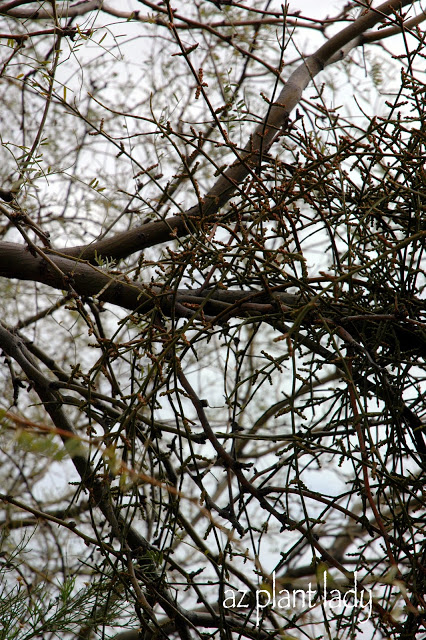
Desert Mistletoe (Phoradendron californicum)
You may notice that this type of mistletoe does not resemble the mistletoe that we traditionally see during Christmas. Well, it is a parasitic plant like the traditional holiday mistletoe and they both belong to the same genus Phoradendron which means ‘thief of a tree’.
If you happen to see mistletoe growing in your tree, I doubt that you are experiencing a surge of Christmas cheer, but rather the opposite. You may want to get rid of it if at all possible. Among some people this can be somewhat controversial. The argument for not removing mistletoe arises from the fact that mistletoe is naturally occurring and is part of the natural desert and birds love to eat the berries. On the other side of the argument, mistletoe does not usually kill the tree, but does stress the tree because it does steal nutrients from the tree, leaving the tree more susceptible to disease and other stresses which can eventually kill the tree over time.
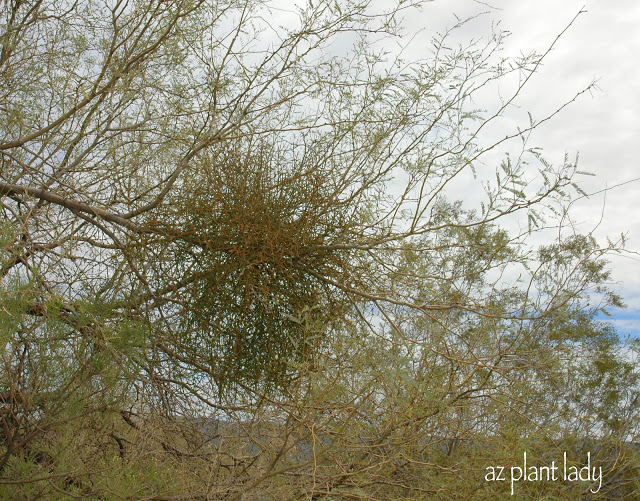
Mistletoe on a Mesquite tree growing in the desert.
My first experience with the mistletoe debate occurred about 13 years ago. I was serving an internship with the Water Conservation Office for the City of Mesa and we were working on recommendations for an existing Botanical Walk, which had many beautiful specimens of desert shrubs and trees. Along the Botanical Walk was a huge Mesquite tree that had large clumps of mistletoe hanging from it. The tree was beautiful and was a favorite among the birds who would feast upon the mistletoe berries.
Now the Mesquite tree was representative of the natural desert and displayed the mistletoe that occurs in the desert. For that reason, the mistletoe on the tree was left alone.
Now my personal recommendation of whether to keep or remove mistletoe is this….
Remove mistletoe as soon as you see it growing on your tree in a residential or commercial landscape setting.
Now, it may take years for a mistletoe infestation to seriously stress a tree but my main concern is that mistletoe is easily spread to neighboring trees.
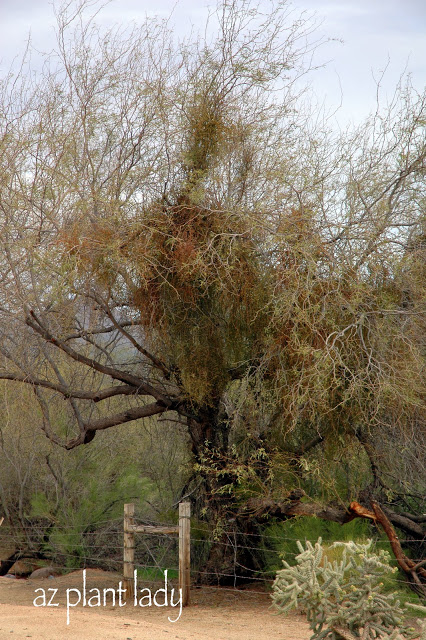
Large amounts of mistletoe growing in a Mesquite tree in the Tonto National Forest.
Even if the idea of having some mistletoe growing in your tree doesn’t bother you….it may bother your neighbors. Mistletoe is easily spread by birds. They love to eat the berries that the mistletoe produce. Well, you may have guessed what happens next – a cute little bird eats a berry….then flies to your neighbor’s tree…..and ‘poops’ out the berry onto a branch along with a nice little pile of fertilizer. Soon the seed within the berry sends roots (haustoria) into the branch that the bird landed on and soon a new mistletoe plant is born.
How do you know if you have mistletoe? It is not always easy to see an early infestation – especially during the warm season when your trees are fully leafed out.
I find many instances of small mistletoe infestations in my client’s trees, especially those people who live in the outskirts of the Phoenix metro area – near the relatively untouched areas of the desert.
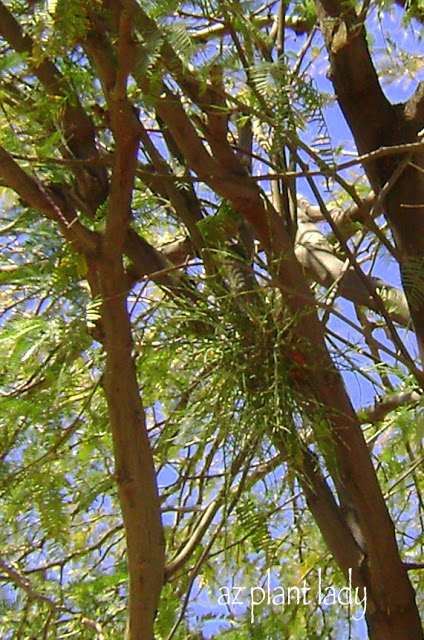
I took this photo at a client’s home. He had no idea that his Mesquite tree was infected. Palo Verde, Ironwood and Acacia trees are also types of trees that are also infected.
Mistletoe is much easier to spot during the winter months when trees do not have as many leaves. Each year on the golf courses, we would do an inventory of all the trees to determine which ones had mistletoe so that it could be removed by pruning.
If the infestation is rather small like the one in the photo above, then you can try pruning the branch at least 1 ft. beneath where the mistletoe occurs. This helps to remove the interior haustoria (roots) of the mistletoe.
If you have a large branch infected and do not want to prune the branch, you can dedicate yourself to brush off the mistletoe. It comes off very easily by just rubbing it off with your hands. This method does NOT get rid of the infection inside of the tree branch and the mistletoe will regrow – meaning that you will have to remove the new growth as part of your garden maintenance.
And so, I encourage you to enjoy mistletoe…..as long as it hangs above a doorway AND you can find someone to kiss 😉
A Sneaky Tree Intruder and Recovery Update

 Noelle Johnson, aka, 'AZ Plant Lady' is a author, horticulturist, and landscape consultant who helps people learn how to create, grow, and maintain beautiful desert gardens that thrive in a hot, dry climate. She does this through her consulting services, her online class Desert Gardening 101, and her monthly membership club, Through the Garden Gate. As she likes to tell desert-dwellers, "Gardening in the desert isn't hard, but it is different."
Noelle Johnson, aka, 'AZ Plant Lady' is a author, horticulturist, and landscape consultant who helps people learn how to create, grow, and maintain beautiful desert gardens that thrive in a hot, dry climate. She does this through her consulting services, her online class Desert Gardening 101, and her monthly membership club, Through the Garden Gate. As she likes to tell desert-dwellers, "Gardening in the desert isn't hard, but it is different."

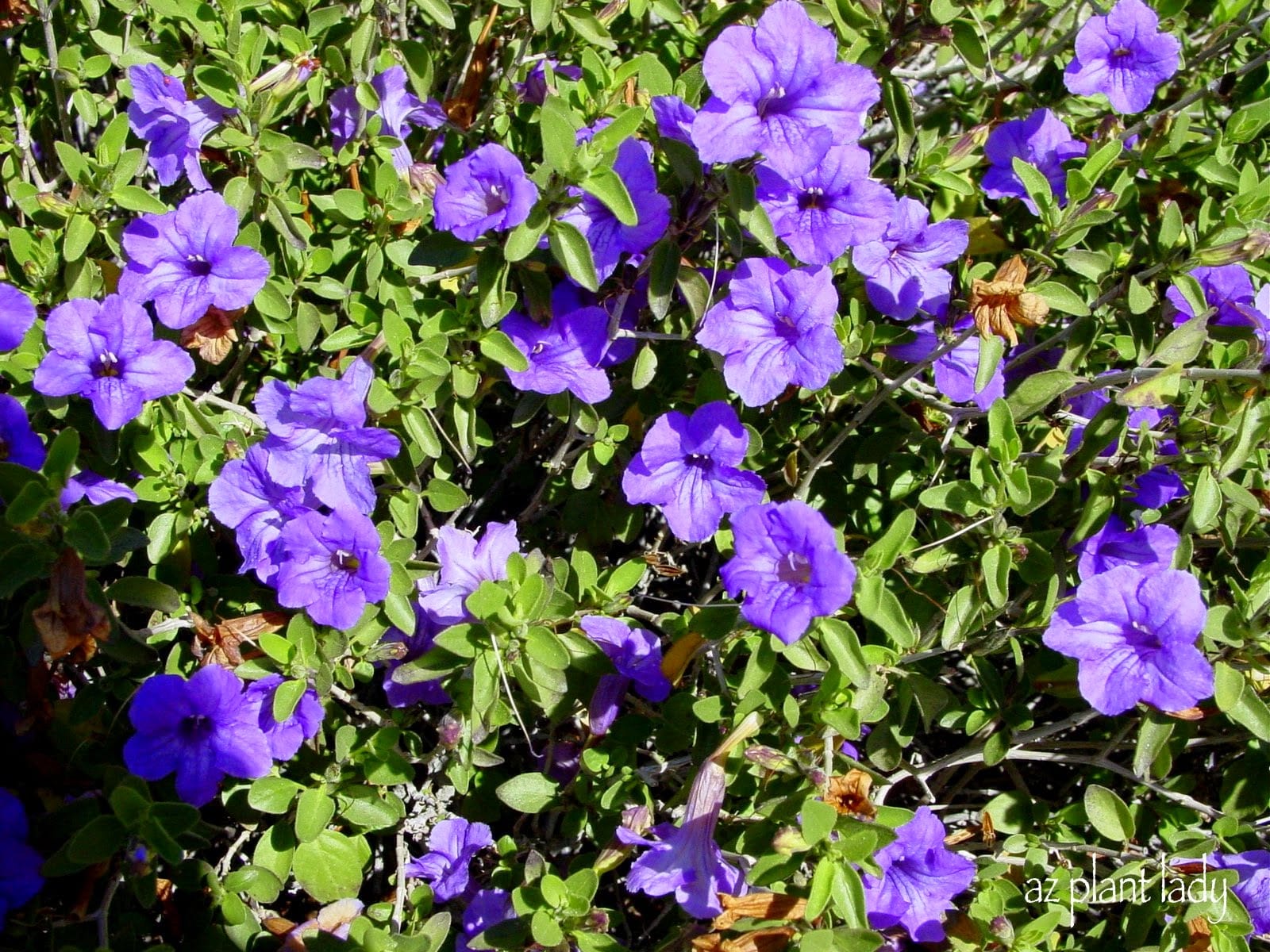










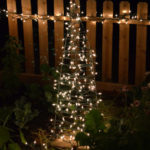

Thanks for the information, very informative. I have been to the area around Bagdad, AZ and seen lots of mistleltoe in the mesquite trees.
I don't think there is a problem any where in Canada (yet ?) but I have run across this before while reading on this plant .. it can be such a nuisance and a serious one if unchecked I can well imagine.
No one thinks of it this way during the holidays though 😉
Good post to keep in mind though !
Joy : )
I so respect the thoughtful approach of dealing with this native to your desert plant Noelle. I would think a native would not be so bad and clearly as you show does have great benefits for birds. I laughed out loud with your son's expression! Little boys do grow out of that feeling of disgust concerning kissing! ;>))
Parasitic plants, as weeds have their place in nature.
I have never seen one except in botany books.
Congratulations for posting about a subject average gardeners have no notion.
I knew mistletoe was parasitic but I've never actually seen the plant myself or knew much about it. Thanks for the seasonal education!
A good post on mistletoe which not many people know especially about the parasitic ones, though the idea of hanging them over your doorway and find an excuse to kiss anyone under them is so romantic!
Thanks you for this information. We live in south Texas on 8 acres with tons of mesquite trees and almost everyone of them has mistletoe on them. I was convinced that this mistletoe was harming the trees and that I needed to eradicate it. From my research it appears that getting rid of it would be impossible. Your article was the only one that I found that had anything positive to say about it. So I'm not going to stress about it, but instead enjoy the birds that it attracts. Thanks.